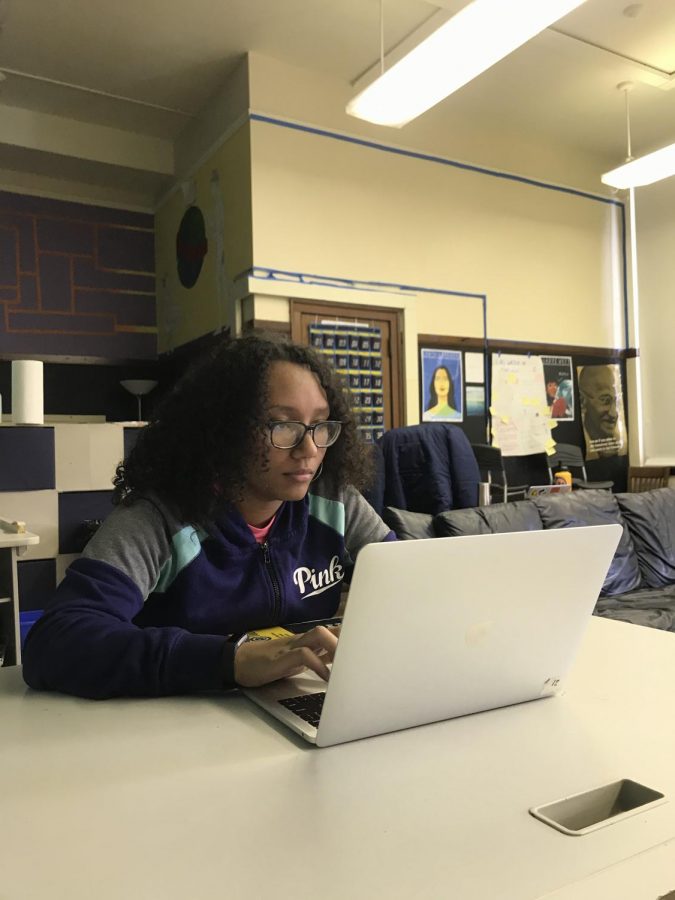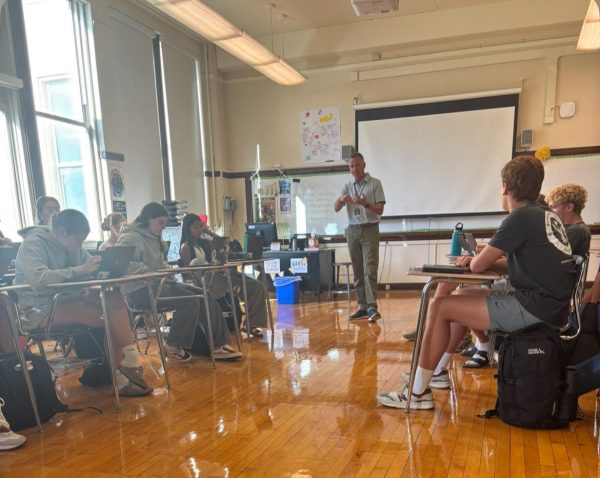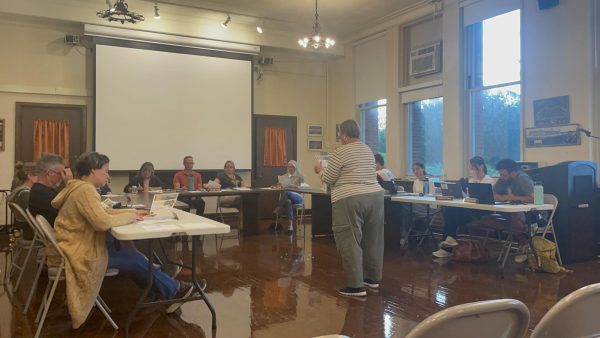AP Classroom brings more resources to AP Classes
At the start of the school year, in addition to being bombarded by the typical first-day to-dos such as syllabi and Google Classroom codes, students were also caught under a deluge of AP Classroom sign-ups.
This new online tool — in addition to many other AP changes — was announced last spring by the College Board and spans across almost all AP classes.
The AP Classroom tool was designed to give teachers and students access to new instructional resources to help students better prepare for AP exams in May.
For some departments (and some AP classes), the new interface marks a significant change in preparation.
For example, in the past, there were very few multiple-choice questions released by The College Board for AP Computer Science A (AP CSA). This meant that it was always a struggle for teachers and students to try and figure out what those multiple-choice questions were and how difficult they were on the test, according to Mr. Law, AP CSA teacher and Computer Science department head.
“So with this new AP Classroom, they released over 400 multiple choice questions, so that’s really nice to have,” Law said. “They have built these progress checks into AP Classroom so that the kids can take them, so that’s also very nice.”
But the other AP Computer Science class offered at Lane, AP Computer Science Principles, already had access to an interface similar to AP Classroom last year, so it’s not new to those teachers, according to Mr. Law.
For other AP courses, the new online interface is proving to be a bit more of an adjustment.
According to AP Language teacher Ms. Martel, there continues to be some issues around navigating the site, but she says her classes have acclimated.
However, this is the first year Martel has taught at Lane, so the AP Classroom isn’t much of a change since everything is new, she said.
For other teachers who have taught AP classes for several years, such as AP Language teacher Mr. Fine, the nuances that AP Classroom brings to his course are more profound.
“It’s a new system and so The College Board continues to modify and add different materials on a weekly basis, so it’s hard to say just a little over one month into the school year how it will impact the course,” Fine said. “However, any additional support such as what’s provided on AP Classroom can only be beneficial.”
In addition to AP Classroom, AP Language and AP Literature classes have changed significantly, including a new essay grading rubric which shifted from a nine-point scale to a six-point grading system.
Ms. Malstrom, Social Science department head and AP European History teacher, explained that AP Classroom is beneficial in pairing the content and skills needed to succeed on the AP exam.
“The College Board has something called the ‘Course and Exam Description,’ which links up all of the content and pairs it with specific skills to assist teachers so that it’s not content separate from skills, but it’s a pairing of content and skills together,” Malstrom said, “which I think is something that is really helpful particularly in social science where you have not only the content but so much skill in terms of writing and analysis.”
Malstrom said the synthesis of skills into the content is one of the strengths of the AP Classroom interface.
“I think the whole thing is making people more aware in helping build these skills into the class, instead of seeing it as content vs. skills,” Malstrom said.
Malstrom also noted that previous AP resources such as Khan Academy and Albert.io allow students to practice questions, but since the questions weren’t coming directly from The College Board, they might not be at the same level or using the same vocabulary that is on the AP exam.
“That’s the benefit here, all of these questions are coming from The College Board, so there’s this sense of continuity and there’s this sense that things are at the same level as you’ll receive on the AP exam,” Malstrom said.
Law also believes that AP Classroom is beneficial.
“I think any time more data can demonstrate that more students are learning what they’re supposed to be learning, that’s always nice. I think, as always, with massive data collection, we have to be careful about over-testing students. You know, I don’t use their test scores as part of their grade; it’s only for self-evaluation,” Law said. “We definitely don’t want to add yet another test for students to take. So finding that balance will always be important, but it’s always nice to get some verification from The College Board itself that the kids are on track.”
So while the extra online work might not be ideal for most students, more resources are proving to be helpful in most classrooms.
“I can’t say I’ve fundamentally changed the way I teach the class,” Malstrom said. “There’s just more resources available and I think that is something teachers are always looking for: more resources and more ways of reaching kids.”
Your donations directly fund the Lane Tech student journalism program—covering essential costs like website hosting and technology not supported by our school or district. Your generosity empowers our student reporters to investigate, write, and publish impactful stories that matter to our school community.
This website is more than a publishing platform—it's an archive, a research tool, and a source of truth. Every dollar helps us preserve and grow this resource so future students can learn from and build on the work being done today.
Thank you for supporting the next generation of journalists at Lane Tech College Prep!

Maggie Nielsen and has been writing for the Warrior since the fall of 2017. She is the president of Podcast Club, a member of Printmaking Club and runs...





